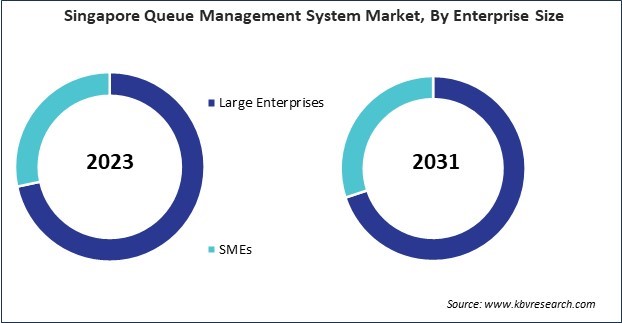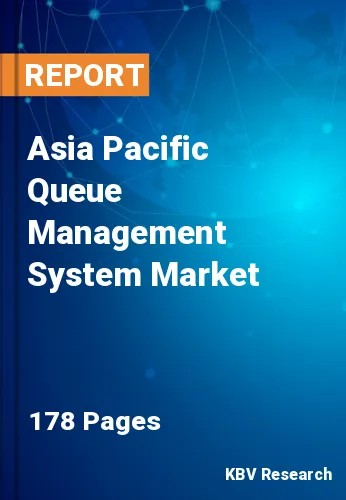The Asia Pacific Queue Management System Market would witness market growth of 7.1% CAGR during the forecast period (2024-2031).
The China market dominated the Asia Pacific Queue Management System Market by Country in 2023, and would continue to be a dominant market till 2031; thereby, achieving a market value of $91.4 million by 2031. The Japan market is exhibiting a CAGR of 6.4% during (2024 - 2031). Additionally, The India market would experience a CAGR of 7.8% during (2024 - 2031).

Queue management systems are used at transportation hubs, including airports, rail stations, and bus terminals, to manage passenger queues at ticket counters, security checkpoints, and boarding gates. They help optimize passenger flow, reduce congestion, and enhance travel experience. QMS solutions help hospitality businesses manage guest queues effectively, whether it's for check-in/check-out procedures, restaurant seating, spa appointments, or other services. By reducing wait times and streamlining the queuing process, QMS solutions enhance the guest experience, leading to higher satisfaction and loyalty.
Moreover, Educational institutions, including schools, colleges, and universities, often experience heavy foot traffic, particularly during peak enrolment periods, registration days, and examination periods. QMS solutions help manage student queues for various services such as admissions, enrolment, counselling, financial aid, and academic advising, ensuring efficient service delivery and reducing wait times for students and parents. Educational campuses comprise diverse facilities such as libraries, laboratories, dining halls, sports complexes, and administrative offices, each serving different functions and experiencing varying demand levels.
According to the report titled Cities as Engines of Growth, published in 2022 by the Government of India, the population of urban areas in India is projected to have increased approximately fourfold, from 109 million in 1970 to 460 million in 2018. The country is projected to experience an additional 416 million inhabitants in its urban areas by 2050, resulting in a 50 percent urban population share. It is already the second-largest urban community. Therefore, due to the above-mentioned factors, the market will grow significantly in this region.
Free Valuable Insights: The Global Queue Management System Market is Predict to reach USD 1.2 Billion by 2031, at a CAGR of 6.3%
Based on Mode, the market is segmented into Virtual Queuing, and Non-Virtual Queuing. Based on Application, the market is segmented into Customer Service, Reporting & Analytics, Appointment Management, Query Handling, Real-Time Monitoring, In-Store Management, and Others. Based on Enterprise Size, the market is segmented into Large Enterprises, and SMEs. Based on Deployment Model, the market is segmented into On-Premise, and Cloud. Based on Offering, the market is segmented into Hardware, Software, and Services. Based on Queue Type, the market is segmented into Structured Queue, Unstructured Queue, Kiosk Queue, and Mobile Queue. Based on Vertical, the market is segmented into BFSI, Government & Public Sector, Energy & Utilities, Healthcare & Lifesciences, Travel & Hospitality, Education, Retail, IT & Telecom, and Others. Based on countries, the market is segmented into China, Japan, India, South Korea, Singapore, Malaysia, and Rest of Asia Pacific.
By Mode
By Application
By Enterprise Size
By Deployment Model
By Offering
By Queue Type
By Vertical
By Country
Our team of dedicated experts can provide you with attractive expansion opportunities for your business.

